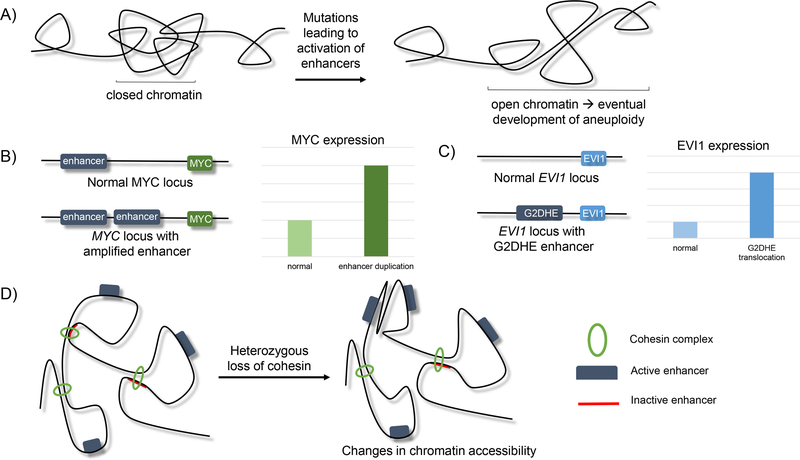Figure 6.
Proposed models of alteration of enhancer function leads to cancer development.
A) Activation of enhancers results in the opening of chromatin, leading to the greater likelihood of chromosomal rearrangements that ultimately lead to aneuploidy (21).
B) Duplication of enhancer sequences that regulate MYC leads to increased MYC expression that drives epithelial cancers (121).
C) Translocation of G2DHE (a GATA2 enhancer) near the EVI1 locus leads to overexpression of the EVI1 oncogene, promoting myeloid and B-cell leukemic development (119).
D) Heterozygous loss of cohesin leads to changes in nuclear architecture that can alter enhancer-promoter interactions and lead to gene expression changes that promote myeloid transformation.
Teaching point: there are many routes that enhancer perturbation can lead to cancer development.

